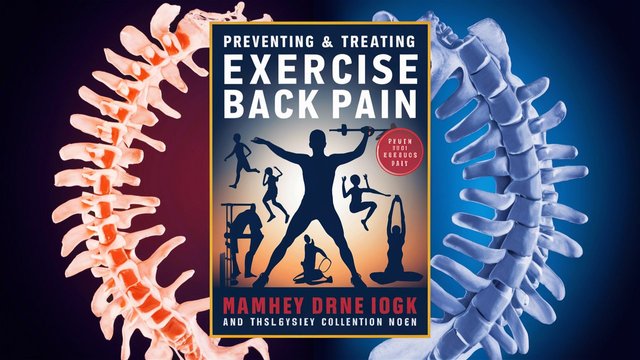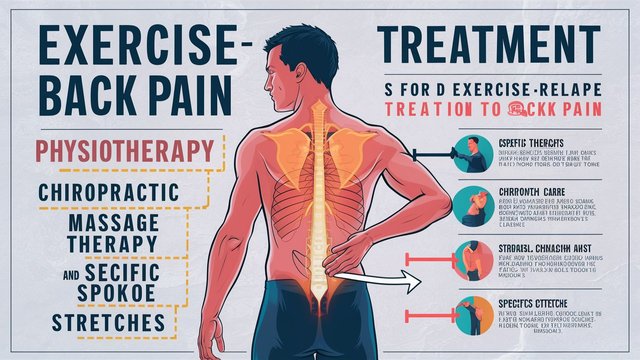Preventing and Treating Exercise-Related Back Pain: A Comprehensive Guide
Introduction:
Exercise is essential for maintaining overall health and fitness, but it can sometimes lead to back pain if not done correctly. Whether you're a seasoned athlete or a beginner, understanding how to prevent and treat exercise-related back pain is crucial for staying active and pain-free. This article provides practical tips and strategies to help you safeguard your back during workouts.
• Proper Warm-Up and Cool Down:
Before diving into your workout routine, it's crucial to warm up your muscles and prepare your body for physical activity. Dynamic stretches, light cardio, and mobility exercises can help loosen tight muscles and reduce the risk of strain on your back. Similarly, don't forget to cool down after your workout to help prevent stiffness and soreness.
• Focus on Core Strength:
A strong core stabilizes your spine and reduces the risk of back injuries. Incorporate exercises that target the core muscles, such as planks, bridges, and bird-dogs, into your routine. Strengthening your core not only protects your back during exercise but also in everyday activities.
• Maintain Proper Form:
Pay close attention to your form during exercise to avoid putting unnecessary stress on your back. Whether you're lifting weights, performing bodyweight exercises, or practicing yoga, proper alignment is key. Engage your core, keep your spine neutral, and avoid rounding or arching your back excessively.
• Gradually Increase Intensity:
Progressively overload your workouts by gradually increasing the intensity, duration, or weight lifted. Sudden spikes in intensity can strain your back and lead to injury. Listen to your body and give yourself time to adapt to new challenges.
• Choose Low-Impact Activities:
High-impact activities like running or jumping can exacerbate back pain for some individuals. If you're prone to back issues, consider incorporating low-impact exercises such as swimming, cycling, or using an elliptical machine into your routine. These activities provide cardiovascular benefits without putting excessive strain on your spine.
• Incorporate Flexibility and Mobility Exercises:
Tight muscles can contribute to back pain, so it's essential to incorporate flexibility and mobility exercises into your routine. Stretching your hamstrings, hip flexors, and lower back can help alleviate tension and improve range of motion. Yoga and Pilates are excellent choices for improving flexibility and strengthening muscles that support the spine.
• Listen to Your Body:
Pay attention to any signs of discomfort or pain during exercise. Pushing through pain can worsen your condition and lead to further injury. If you experience persistent or severe back pain, consult a healthcare professional for proper diagnosis and treatment.
• Invest in Supportive Gear:
Wearing supportive footwear and using proper equipment can help reduce the strain on your back during exercise. Invest in shoes with adequate cushioning and support, especially if you engage in activities like running or aerobics. Additionally, using a supportive mattress and pillow can promote proper spinal alignment and facilitate recovery.
Treatment Options for Exercise-Related Back Pain:
If you experience back pain despite taking preventive measures, there are several treatment options you can explore:
• Rest and Ice: Resting and applying ice to the affected area can help reduce inflammation and alleviate pain.
• Physical Therapy: A physical therapist can design a personalized exercise program to strengthen the muscles supporting your back and improve flexibility.
• Massage Therapy: Massage therapy can help relieve muscle tension and improve circulation, promoting faster recovery.
• Over-the-Counter Pain Medication: Nonsteroidal anti-inflammatory drugs (NSAIDs) like ibuprofen can help reduce pain and inflammation.
• Professional Medical Evaluation: If your back pain persists or worsens, consult a healthcare professional for a proper diagnosis and treatment plan. They may recommend imaging tests, injections, or other interventions depending on the underlying cause of your pain.
Conclusion:
Exercise-related back pain can be a barrier to staying active, but with proper prevention and treatment strategies, you can minimize the risk and enjoy the benefits of regular physical activity. By incorporating these tips into your workout routine and listening to your body, you can protect your back and maintain a healthy, active lifestyle for years to come.









